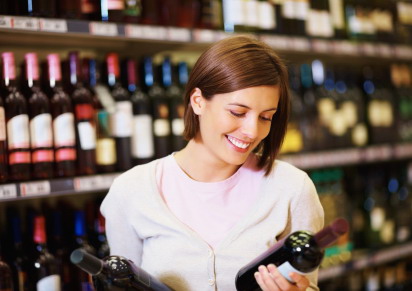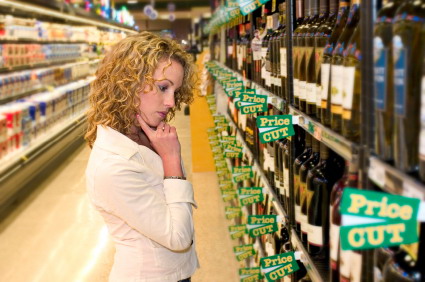
Ever since I launched my first wine mobile app last year, my readers have asked me if their smartphones could scan a bar code or label and voila, there’s all the information on the wine?
It’s a lovely fantasy that both wine lovers and wine app developers share (what we used to call vapour-ware in the high-tech biz mostly used for demo and PR purposes). It’s just not a reality.
However, I owe my readers a quick overview of the options, especially with the launch of my new mobile app a few weeks ago. As a double geek (wine and high tech), I love following the latest technology trends:
1. UPC Bar Codes: scan the UPC bar code (shown above) to retrieve the info on the wine. Challenges:
– no standards body for barcodes for wine so there are various types of codes
– wineries re-use barcodes for different vintages which creates redundancy and the inability to pinpoint wine info quickly
– thousands of wines, especially high-end ones, don’t use barcodes for aesthetic reasons
– barcode scanning accuracy technology needs to improve dramatically with issues related to pixel comparison and optical character recognition (OCR)

2. 2D Bar Codes: scan the 2D bar code (shown above) to retrieve the info on the wine. Challenges:
– all of the issues noted above for UPC codes
– there’s virtually no penetration for 2D codes in the wine market: only one or two wineries use it in Ontario liquor stores, fewer than 500 in all of the US out of more than 250,000 new wine SKUs produced every year
– unlike UPC codes, there’s no central database, so the process of associating info with the 2D code is manual, time-consuming and expensive
– there’s no integrated 2D bar code wine app on the market, which necessitates multiple steps and hassle fo the consumer: users must download a separate 2D scan app, then sign up for a wine review service, then scan the codes to see if the data matches between the two
– the information gets out of date quickly

3. Label Readers: snap a photo of the label to retrieve the info on a wine. Challenges:
– significant issues with reader accuracy due to the lighting, reflection, angles and curvature of wine labels on a bottle
– lack of universality: there’s no central database of quality wine label images to compare to for the search
4. Google Goggles: a visual search app on Android that takes a picture to retrieve the wine info. Challenges:
– only for the Android (not iPhone, BB or other smartphones)
– scan accuracy still needs to improve dramatically
The other related question I get is what’s the difference between a mobile app and a mobile version of a web site?
A mobile app is an application that is written/coded for a particular smartphone platform, such as iPhone and BlackBerry. It’s downloadable through their respective stores, such as Apple’s iTunes and BlackBerry’s App World. Both my first and second mobile apps are native apps written for these platforms.
A mobilized version of a web site is simply a skinnied down version of a web-site so that it fits a little better on a smartphone screen. However, it has none of the navigation controls and other features of a native mobile app, nor does it reach the large audience of mobile app lovers through the app stores.
I’ve also created a section on my site with this format for those who have Droids, Palm Pre, Nexus and other smartphones. I’ll be launching native mobile apps for these platforms soon.
Let me know your thoughts on this issue. The technology continues to evolve, but we’re a long way from scan and sip in the liquor store. For now, we’ll have to rely on the ultimate optical readers: our eyes :)
Cheers,
Natalie








